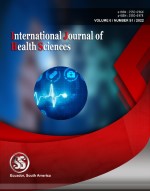Genome sequencing using machine learning with a special focus on tuberculosis
Keywords:
mayobacterium tuberculosis, genome sequencing, machine learningAbstract
Machine learning is becoming increasingly prevalent. However, in the discipline of Bioinformatics and Computational Biology, it is not a popular use case. Machine learning techniques are used in only a few technologies. The majority of the tools are built using deterministic techniques and algorithms. Deoxyribonucleic acid (DNA) is a biological macromolecule composed up of deoxyribonucleic acid. Its main function is to store data. Due to breakthroughs in sequencing technology, DNA sequence data is presently rising at an exponential pace, ushering the study of DNA sequences into the big data age. Machine learning is also a powerful tool for massive processing it learns on its own from large volumes of data. We've talked about machine learning techniques and how they can be used to improve genome sequencing accuracy. In our review we have also discussed about genome sequence for Mycobacterium Tuberculosis. Tuberculosis is because of the bacteria, Tuberculosis caused by Mycobacterium tuberculosis. TB is considered one of the leading the reasons for dying all over the world. MDR-TB is a form of germs that cause tuberculosis that is not susceptible to anti-TB medications such as isoniazid (INH) and rifampin (RMP).
Downloads
References
Álvaro Beltrán-Corbellini 1, Ángel Aledo-Serrano 1*, Rikke S. Møller 2,Eduardo Pérez-Palma 3, Irene García-Morales 1,4, Rafael Toledano 1,5 and Antonio Gil-Nagel, “Landscape for Developmental and Epileptic Encephalopathies”, Received: 14 September 2021 Accepted: 27 January 2022 Published: 17 February 2022.
Andy J. Liu, MD; Adam M. Staffaroni, PhD; Julio C. Rojas-Martinez, MD, PhD; Nicholas T. Olney, MD; Carolina Alquezar-Burillo, PhD;Peter A. Ljubenkov, MD; Renaud La Joie, PhD; Jamie C. Fong, MS; Joanne Taylor, MS; Anna Karydas, BA; Eliana Marisa Ramos, PhD; Giovanni Coppola, MD; Adam L. Boxer, MD, PhD; Gil D. Rabinovici, MD; Bruce L. Miller, MD; Aimee W. Kao, MD, “Association of Cognitive and Behavioral Features Between Adults With Tuberous Sclerosis and Frontotemporal Dementia”.
Bongaarts, A. (2021). Molecular features of low-grade developmental brain tumours: Focusing on subependymal giant cell astrocytomas in tuberous sclerosis complex.
Kumar-Sinha C, Chinnaiyan AM. Precision oncology in the age of integrative genomics. Nat Biotechnol. 2018;36(1):46-60. doi:10.1038/nbt.4017
Chen L, Jiang Y, Wang J. Fetal cardiac rhabdomyoma due to paternal mosaicism of TSC2: A case report. Medicine (Baltimore). 2020;99(35):e21949. doi:10.1097/MD.0000000000021949.
Kovesdi, E.; Ripszam, R.;Postyeni, E.; Horvath, E.B.; Kelemen,A.; Fabos, B.; Farkas, V.; Hadzsiev, K.;Sumegi, K.; Magyari, L.; et al. Whole Exome Sequencing in a Series of Patients with a Clinical Diagnosis of Tuberous Sclerosis Not Confirmed by Targeted TSC1/TSC2 Sequencing.Genes 2021, 12, 1401. http://doi.org/,10.3390/genes12091401
Ura, H.; Togi, S.; Niida, Y.Targeted ,Double-Stranded cDNA Sequencing-Based Phase Analysis to Identify Compound Heterozygous Mutations and Differential Allelic Expression. Biology 2021, 10, 256. https://doi.org/10.3390/ biology10040256
Bob Yirka,” Using machine-learning to find mutations in similar genome sequences of cancer samples”, 20 July 2021. https://phys.org/news/2021-07-machine-learning-mutations-similar-genome-sequences.html
Dongfang Zou,1,† Lin Wang,2,† Jianxiang Liao,1,† Hongdou Xiao,2,† Jing Duan,1 Tongda Zhang,2 Jianbiao Li,2 Zhenzhen Yin,2 Jing Zhou,2 Haisheng Yan,2 Yushan Huang,2 Nianji Zhan,2 Ying Yang,2 Jingyu Ye,2 Fang Chen,2 Shida Zhu,2 Feiqiu Wen3 and Jian Guo,” Genome sequencing of 320 Chinese children with epilepsy: a clinical and molecular study”, BRAIN 2021: 144; 3623–3634
Published
How to Cite
Issue
Section
Copyright (c) 2022 International journal of health sciences

This work is licensed under a Creative Commons Attribution-NonCommercial-NoDerivatives 4.0 International License.
Articles published in the International Journal of Health Sciences (IJHS) are available under Creative Commons Attribution Non-Commercial No Derivatives Licence (CC BY-NC-ND 4.0). Authors retain copyright in their work and grant IJHS right of first publication under CC BY-NC-ND 4.0. Users have the right to read, download, copy, distribute, print, search, or link to the full texts of articles in this journal, and to use them for any other lawful purpose.
Articles published in IJHS can be copied, communicated and shared in their published form for non-commercial purposes provided full attribution is given to the author and the journal. Authors are able to enter into separate, additional contractual arrangements for the non-exclusive distribution of the journal's published version of the work (e.g., post it to an institutional repository or publish it in a book), with an acknowledgment of its initial publication in this journal.
This copyright notice applies to articles published in IJHS volumes 4 onwards. Please read about the copyright notices for previous volumes under Journal History.
















